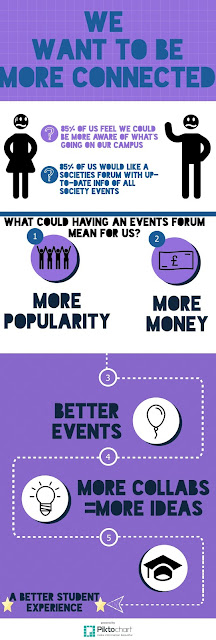Background: The aim of this project was to encourage people to break away from stereotypical behaviour and also learning to do something new. The idea stemmed from ruminating about stereotypical behaviour and how that can become a self-fulfilling prophecy in that it socialises people to behave according to the stereotypes placed upon them. For example, a common stereotype for men is that they aren’t overly emotional and showing affection towards friends the same sex and the opposite being true for women - this applies more to heterosexual gender stereotypes as there are nuances with homosexual relationships. 
The first challenge was for people to address these stereotypes by carrying out an act which falls against them, for example, a heterosexual man sending his male friends flowers as a gift etc. Secondly, we challenge people to do something new, for example to start a blog or ride a bike, and challenge their friends to do the same. As proof of their participation in our project, all they had to do was post a selfie onto our Facebook page or on Twitter, with the hashtag #breakthemould. We thought about the impact of novel actions and experiences on the overall perception of one’s quality of life and also how fear can hinder one from doing things that could potentially be fulfilling.
Our project looks mainly at popular gender stereotypes as aforementioned and not racial, religious, cultural stereotypes as those are very complex to address.
Techniques: Our project employed self-efficacy as its main persuasion technique (Bandura, 1977). Strecher et al’s review of studies on health behaviour i.e. cigarette smoking, weight control, contraception, alcohol abuse and exercise behaviors. Self-efficacy revealed a strong relationship between self-efficacy, change in health behaviour and maintenance of such behaviour. Self-efficacy rests on the ability of the individual to organize and execute the actions needed to reach their goal. It can be manipulated through techniques such as guided mastery which involves successfully learning new things (acting against stereotypical behaviour and doing something new), social modelling and social persuasion which leads to action based on other’s actions or as a result of verbal influence/encouragement (posting selfies and challenging friends to do so), and physiological states which influences action based on mood and motivation.
Action: We made a poster featuring a model taking a selfie. This poster was also used as the profile picture for the Facebook page, which a number of people were invited to like. The Facebook page explained the goals of the project, and encouraged people to post their own selfies or text stories for those less inclined to share their photo.
Limitations: Although people engaged with our paged by liking and joining it, most weren’t inclined to share their selfies. We posted our own selfie in order to encourage people to join in but did not spur action from others. A Twitter account was also made, but gained no traction. This could be because people weren’t interested in sharing personal achievements with a group of strangers. It could also be that the project nonetheless encouraged people to try something new even without their posting it to the Facebook page and self efficacy may develop over a longer time period.
References
Bandura, A. (1977). Self-efficacy: Toward a unifying theory of behavioral change. Psychological Review, 84, 191-215.
Strecher, V., McEvoy DeVellis, B., Becker, M., & Rosenstock, I. (1986). The Role of Self-Efficacy in Achieving Health Behavior Change. Health Education & Behavior, 13(1), 73-92.
Teju Soyinka, Nat Holding & Oktay Ulker

















